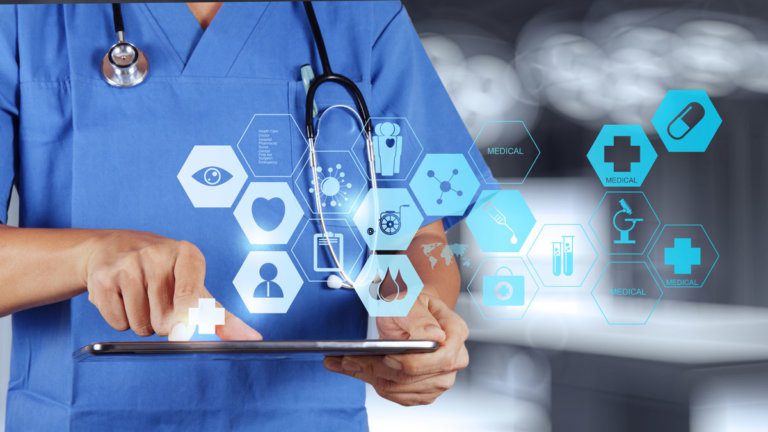Technology
Healthcare and the Role of Cable

Advances in nanotechnology, internet of things, 3D printing, personalized medicine, genomics, and big data are creating a convergence that will allow lower-cost, more effective, and more convenient medical practices to become the norm over the next few years. These advances will change the medical landscape significantly, and create large opportunities for those who can integrate enabling and underlying technologies.
Environmental and Demographic Challenges
Now is a very interesting time in medical technology. Researchers at McGill University and the UCLA Fielding School of Public Health analyzed the efficacy of health care systems across the world and found the U.S. ranks 22nd out of 27 high income nations when it comes to increasing life expectancy (per dollar spent), meaning the US health care market is especially inefficient. In addition, in the next twenty years, due to an aging population, for the first time the US health care system will have fewer payers than payees – more people will be on Medicare and Medicaid than paying into the system. An aged population requires different (and frequently more expensive) services, which will add additional economic pressure on the system. For this reason, the next few years will see a shift towards demonstrable value in services, as well as shifts in the technological and entrepreneurial landscape, with a goal of providing more services at a lower cost (also called medical efficiency) – and thanks to technological innovation, this should come without compromising healthcare outcomes. Although the landscape may appear dismal, technological opportunities may save American society.
Technological Factors at Work
Several technological factors are at work right now that should help make this a reality:
- Nanotechnology is becoming mature, especially as applied to in-the-field testing. Several technologies are currently being developed and tested, including a portable dengue fever test and HIV test. By 2020, most blood tests that previously required a trip to a regional lab may be available from anywhere, at a very low cost.
- The Internet of Things (IoT) and 3D Printing are creating an innovation environment for devices where the cost of prototyping a new device has dropped over 75% in the last 3 years, with a similar drop in cost of end user healthcare devices. 3D printing has also allowed for the creation of customized health care, such as custom prosthetics.
- Lower costs due to the above should make possible near-continuous testing of such things as blood pressure, blood glucose and hormone levels, leading to significantly better well-care outcomes for patients with diabetes, high blood pressure, and hormonal issues – the three most common chronic issues in the population.
- In addition, low cost remote devices will allow better follow-up and post-procedure compliance on the part of patients. A recent study showed that average compliance after hospital stays is less than 50%, mostly because of inability to remember or follow post-care instructions. Several companies are developing software that is used both in-hospital and once the patient is home (for example, GetWell Networks), and will be integrating these systems with home care products that provide reporting and alerting on everything from outpatient activity levels to pharmaceutical consumption, allowing for far more comprehensive and effective follow-up care and significantly better outcomes.
- Electronic Health Records (EHR) are rapidly getting standardized, and devices are beginning to interoperate more effectively with these systems. This allows big data analysis and patient monitoring automation at levels not previously seen.
- Genomic testing is becoming available, allowing “personalized medicine” – testing against a user’s genetic information to determine whether a treatment is likely to work for an individual (rather than statistically across a broader swatch of the general population).
These technological factors will enable more efficient analysis of patient records. More efficient analysis of patient records allows allows for “continuous analysis” of medical device, pharmaceutical, treatment, and procedural effectiveness across a broad population – a continuous clinical trial for existing and emerging treatments. This would allow innovative entrepreneurial and reimbursement and treatment models on the part of the medical insurance industry – keying reimbursement rates and copayments to the efficacy of treatments in the general population. These potential reimbursement and treatment models can lower one of the key factors that increase the cost of health care adapting the standard of care based on what’s new and more effective for only a minority of the population. These technical advances also allow for personalization of medicine potentially providing incentives for pharmaceutical companies to develop test that indicate the efficacy of a medicine for a particular patient. Big data models can also help in fraud detection, approval process, and detection of cross-indicators that define populations at high risk of complication, all additional causes of inefficiency in the health care system.
Where Cable Adds Value to the Healthcare Equation
There are a number of opportunities for the Cable industry regarding these developments:
- Network Services: Remote testing and monitoring requires a highly secure, private backbone for data transmission, as well as the ability to transmit large quantities of imaging data.
- Inter-Clinic Connectivity: As data interoperability standards mature for medical devices, it should allow independent remote “clinics” that can interconnect with any hospital – these could exist in caregiver facilities, offices, or neighborhoods. These clinics should be able to “dial-up” to a larger care facility and interoperate securely for the duration of a care visit, without having to be a part of that facilities’ network. Again, these clinics need secure, private, high-bandwidth services.
- Data Centers: Big data and machine learning requirements of healthcare will require huge amounts of data and compute, an opportunity for large-scale datacenters. In addition, these services may require the ability to anonymize data for remote application consumption, and this will be a new class of cloud service.
By Ken Fricklas —



